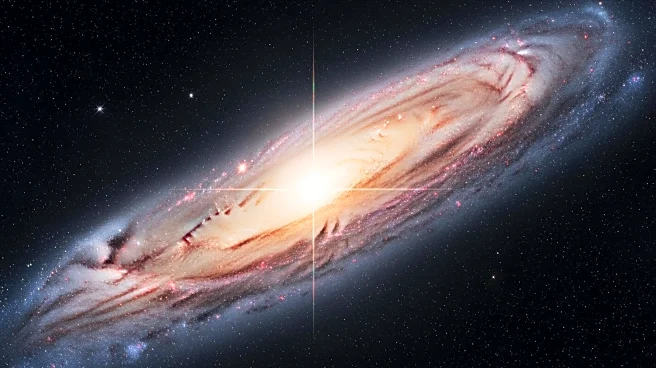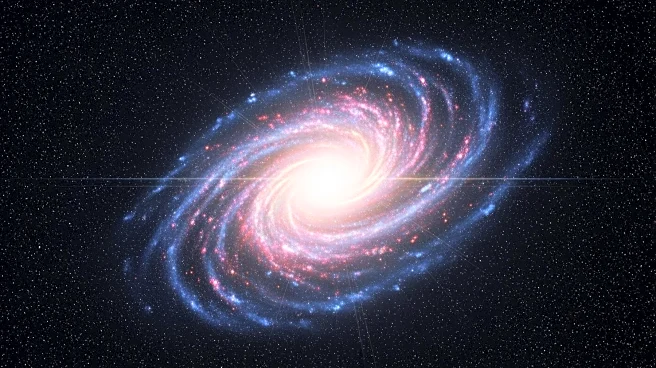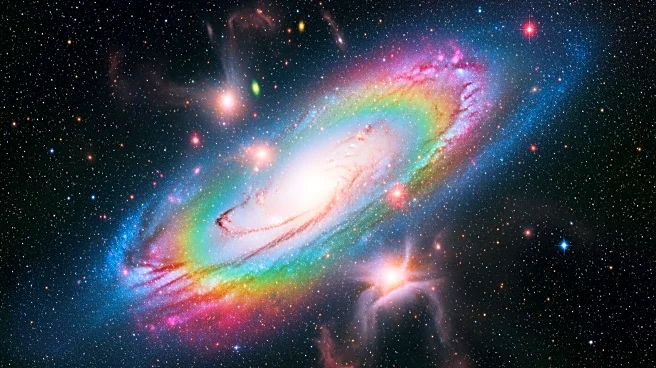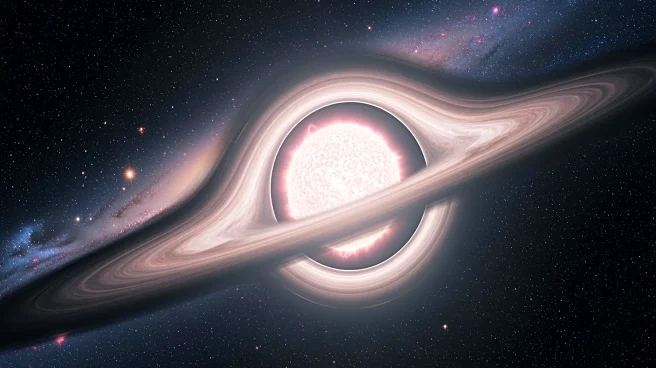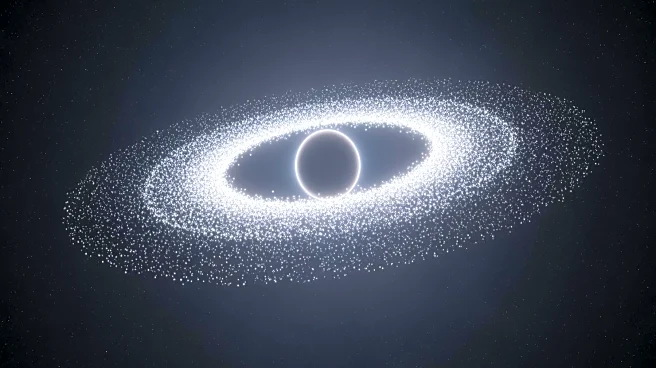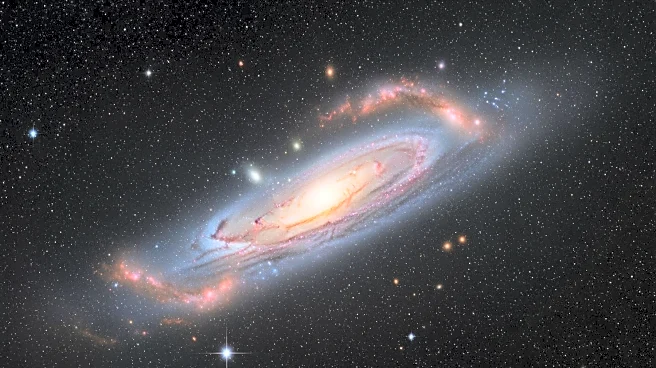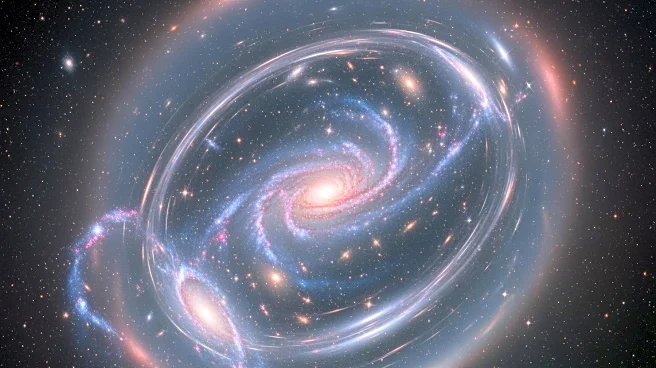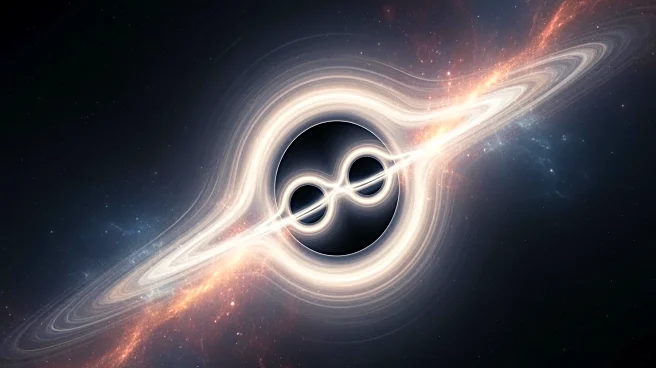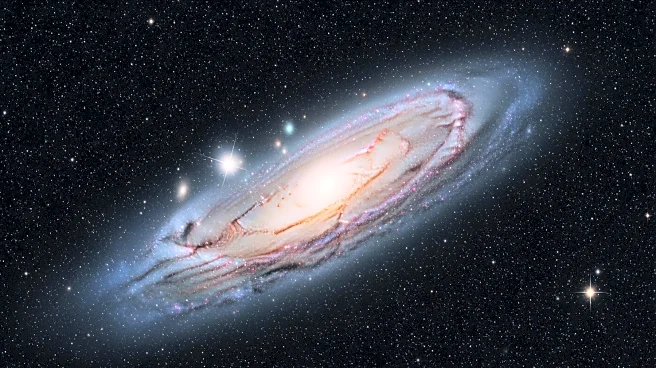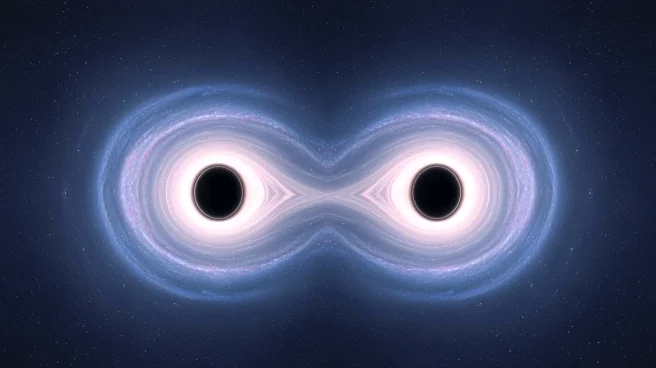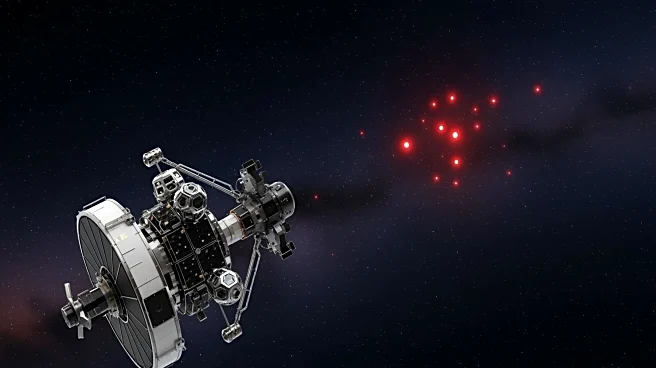What's Happening?
Astronomers have detected a tidal disruption event (TDE), named AT2024tvd, occurring 2,600 light-years from its host galaxy's center. This event, marked by intense and rapidly evolving radio signals, provides evidence of wandering supermassive black holes.
The discovery challenges existing models of TDEs, which typically occur at galactic centers. The black hole responsible for AT2024tvd may have been ejected during galaxy mergers or originated from a previously merged galaxy. Follow-up observations revealed two powerful radio outbursts, with the latter showing unprecedented rapid evolution.
Why It's Important?
The discovery of AT2024tvd outside a galaxy's core suggests that supermassive black holes may be more common in off-center locations than previously thought. This challenges current theoretical models and search strategies, which focus on galactic centers. The findings could lead to a reevaluation of how astronomers search for and study TDEs, potentially uncovering numerous unseen wandering supermassive black holes. Understanding these phenomena is crucial for advancing knowledge of galaxy formation and evolution.
What's Next?
Astronomers may need to broaden their search strategies to include off-center locations in galaxies, potentially leading to the discovery of more wandering supermassive black holes. Further observations and studies of AT2024tvd and similar events could refine theoretical models of TDEs and improve understanding of black hole dynamics. The scientific community will likely focus on developing new methods to detect and analyze these off-center events, enhancing the overall understanding of cosmic phenomena.
